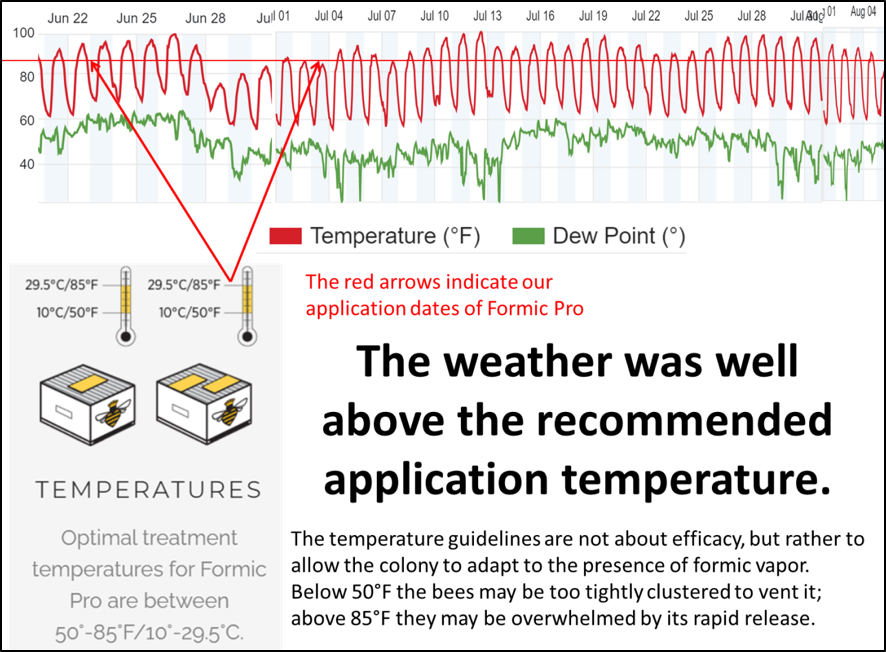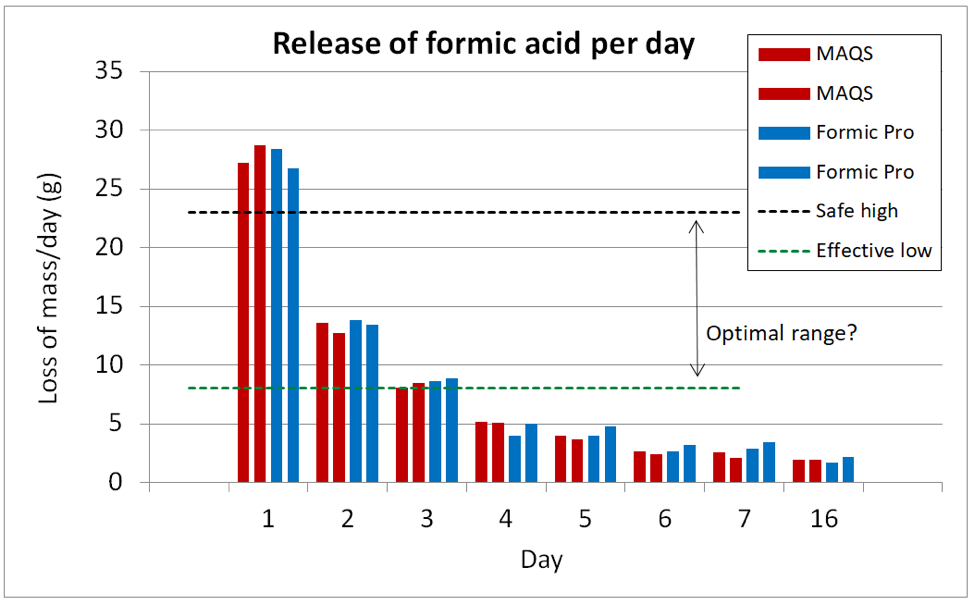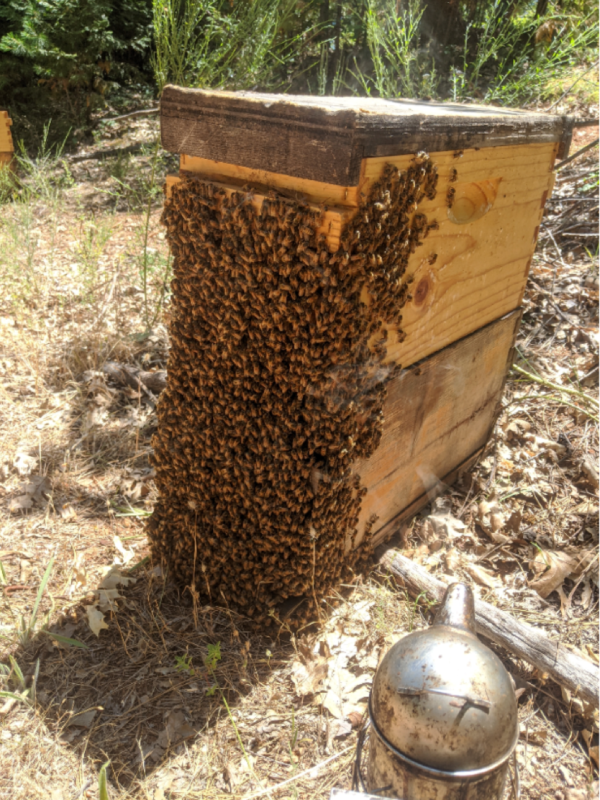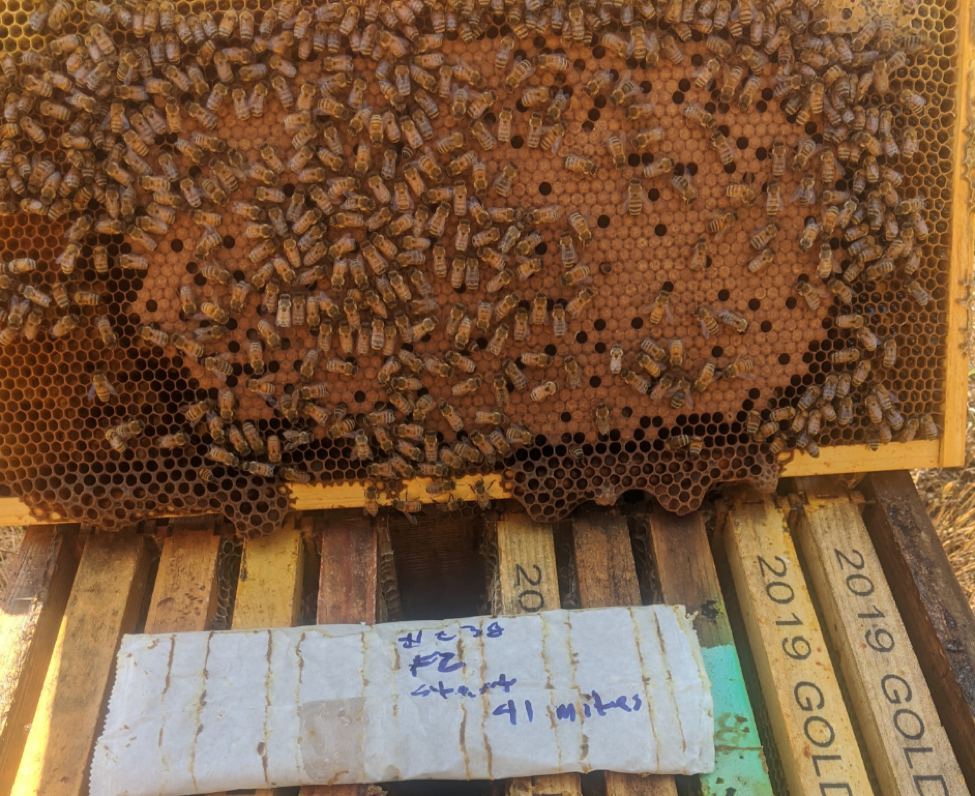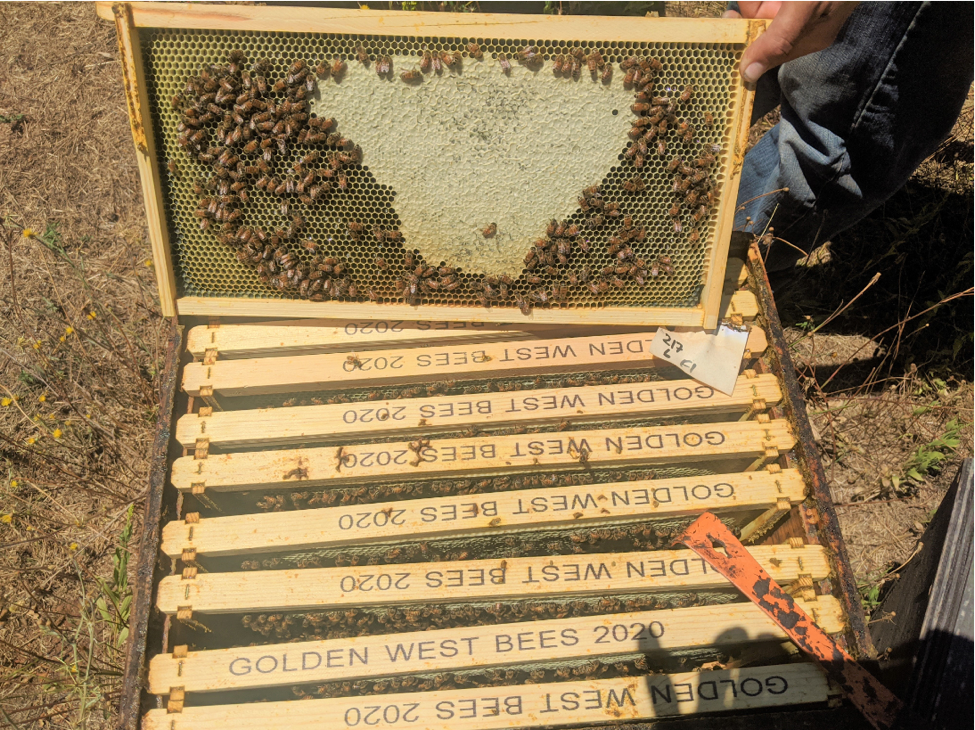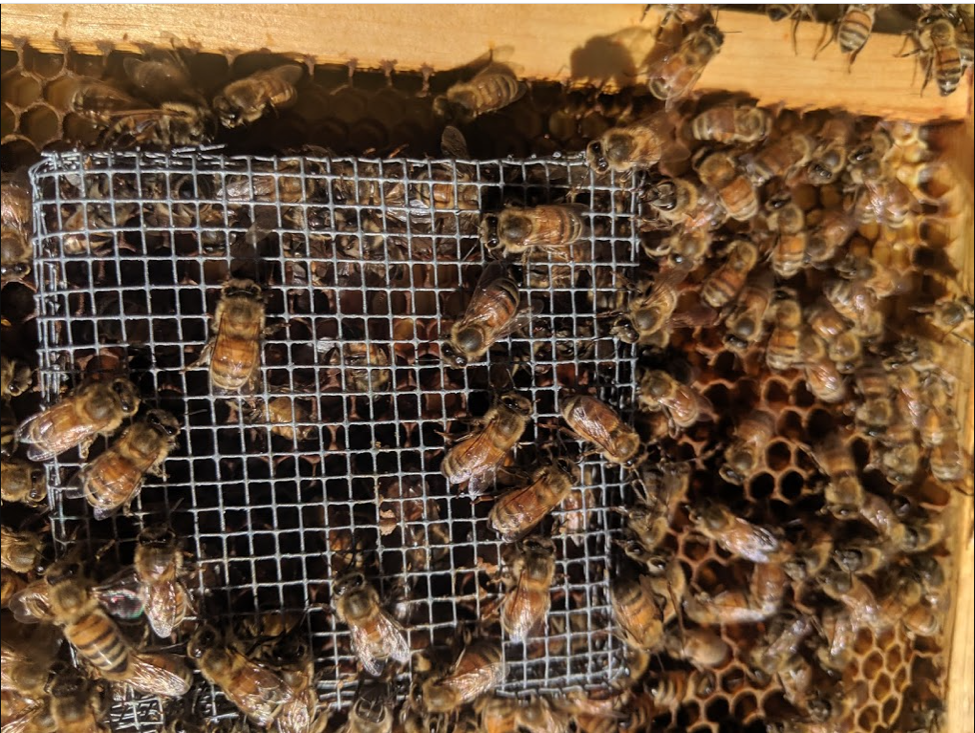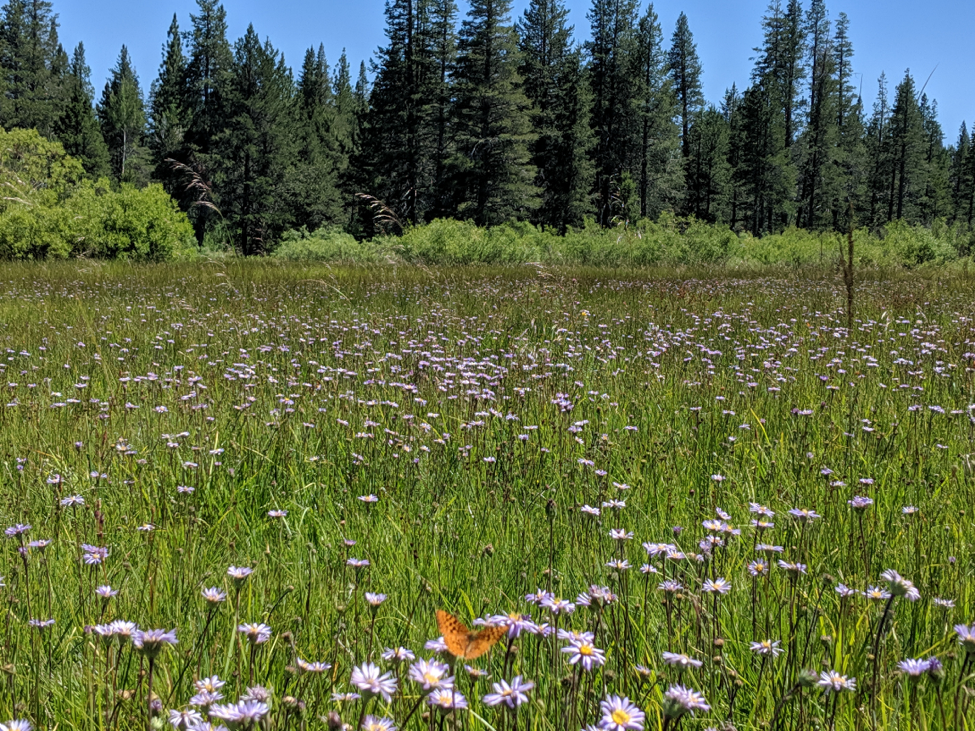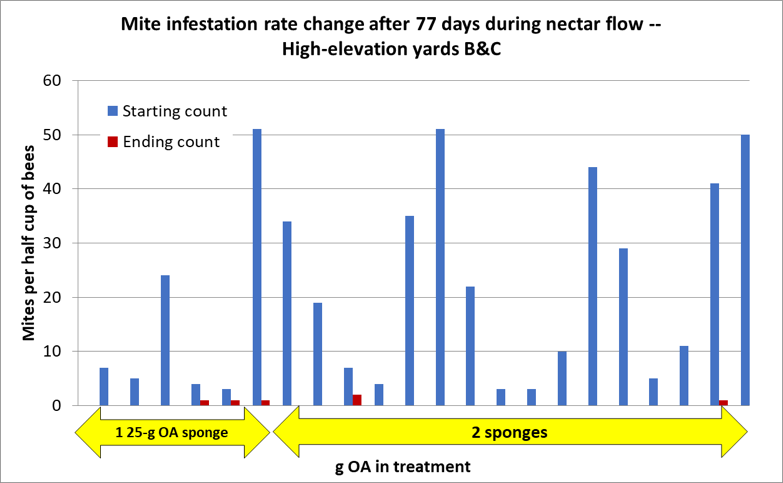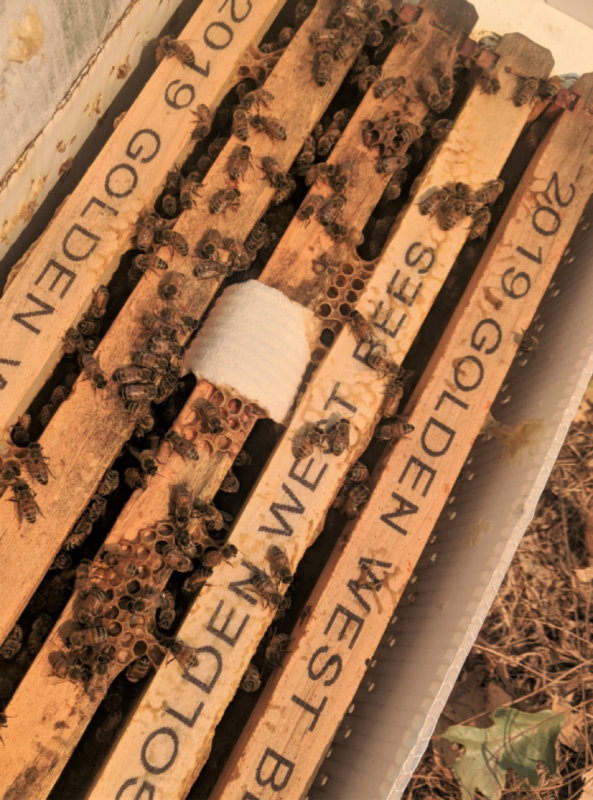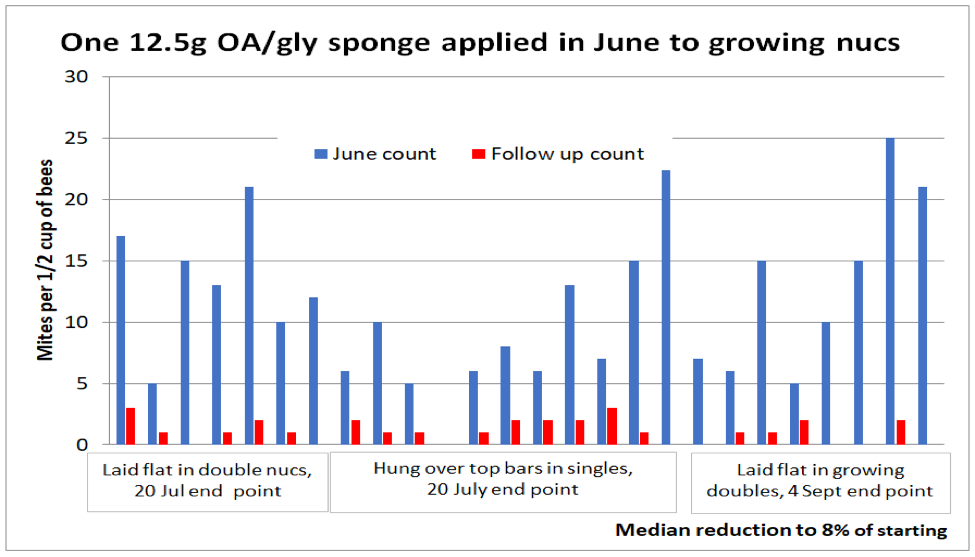Mite Control While Honey is on the Hive: Part 3
Mite Control While Honey is on the Hive
Part 3
First Published in ABJ January 2021
Randy Oliver
ScientificBeekeeping.com
In my two previous articles in this series, I showed the formal results of my field trial comparing summer mite treatments. We also have additional findings from other yards in which we applied extended-release OA.
A Problem with Labels
I’ve been beating myself up for incorrectly interpreting the label of Hopguard 3 (not understanding that it was permissible to re-treat during the summer). But then I attended (via Zoom) the fall meeting of the Maryland State Beekeepers Association, and had the opportunity to see Mark Dykes — the coordinator of the Bee Squad — present on his own trial of post-harvest mite treatments, including Hopguard. Mark is a well-experienced bee inspector and researcher, familiar with registration and labels, and made the point that he had applied his treatments exactly according to the label. But as had I, Mark also interpreted the Hopguard 3 label to say that only a single treatment should be applied. So now I don’t feel so bad, and have brought the issue to the attention of the manufacturer, who plans to rewrite the label.
But that wasn’t the only thing discussed — some of us needed to point out that, despite its popularity, oxalic vaporization isn’t yet approved for application during the summer. And Mark pointed out that the label for Apivar does not mention that the manufacturer recommends scraping any propolis buildup off the strips during the course of treatment [[1]].
Practical application: The label is the law, and I’m not the first to complain that many pesticide labels are lacking in clarity, difficult to interpret, or more about liability concerns than being informational.
The Effects of Formic Pro upon the Colonies
We’re legally stuck with only two treatments approved for use when honey supers are on the hive. Both of those treatments — Hopguard and formic acid — require heavy lifting if to be applied after the honey supers are in place, and Hopguard 3 would require multiple treatments. Not only that, but Formic Pro might need to be applied above its recommended temperature range (Figure 1).
Practical application: Thus my interest in extended-release oxalic acid, which could be applied prior to placing the honey supers, and used during hot weather.
Figure 1. As you can see by the weather history graph for the trial, we applied the first application of Formic Pro at temperatures well above the recommended range — in all yards during the heat of the day.
Practical application: I added some explanatory notes from David VanderDussen to the above graphic, regarding the reason for the temperature guidelines.
Formic Pro is the latest iteration of NOD Apiary Products formic products. We’ve applied a lot of Mite Away II and Mite Away Quick Strips (MAQS) over the years, which hit you with a blast of formic vapor when first opened; Formic Pro (at least when fresh) is far more pleasant to work with. I was curious whether there was a different amount of, or a different release rate of, formic acid between MAQS and Formic Pro, so I placed two of each into a double deep hive of drawn combs (with a top and bottom board, but without bees) during low-humidity 90°F weather, weighing the strips each day (Figure 2).
Figure 2. Weight loss over each 24-hr period. As you can see there was no difference between the two types of strips – each lost, in total, 65 g in weight (the equivalent of 100 g of 65% formic acid). This equal rate of loss surprised me, since there is far less noticeable formic odor when I open a packet of Formic Pro than with MAQS.
Regarding the above chart, evaporation would likely be faster if there were bees fanning. As far as I can tell from the literature, the optimal release range for formic acid during warm weather would be somewhere between the dotted lines (the upper line being the sustained rate that I measured for the first-generation Mite Away II pads, which were applied to the top of the hive in a rim). But that’s not to say that the long-term release of a little formic into the center of the broodnest doesn’t have an effect upon the mites.
Practical application: In order to avoid the initial impact of formic fumes, the recreational beekeeper has the option of removing the queen from the hive for the first three days of treatment, and then returning her after the main blast is over. I’ve also applied Formic Pro successfully to weak nucs in hot weather by simply pressing the hive cover down tight against a half strip (or full strip for nucs with higher mite counts) in order to slow the release of vapors (this also extends the treatment for some time). I observed next to no queen loss when treating over a hundred nucs in hot weather this manner, and obtained acceptable mite reduction.
As I reported last month, mite reduction from Formic Pro was good, but how did the colonies fare otherwise? Many of the colonies to which we applied the strips during the heat of the day responded by bearding (Figure 3).
Figure 3. The bees didn’t like it, and stepped outside for a little fresh air! But they didn’t abscond or die — I’m not sure whether the low humidity was a factor. But the question is: was the disruption worth the benefit?
As I’ve observed time and again, colonies tend to recover nicely after formic treatments (Figure 4).
Figure 4. As has long been my experience with formic acid, the brood patterns generally look great after the queen resumes laying after treatment. This colony had a starting mite count of 41 (per half cup of bees), and received two strips of Formic Pro at the same time. This photo, taken 42 days later, shows a typical post-formic nice brood pattern.
And despite the bearding and brood break, the stronger formic-treated colonies drew foundation and filled it with honey (Figure 5) — even in some colonies that replaced their queen.
Figure 5. Despite the application of Formic Pro in hot weather, the “stronger” colonies quickly rebounded after treatment (remember that most of the colonies were only of 8-10 frame strength when we applied treatments). This one was typical, and drew out ten frames of deep foundation (placed above the single brood chamber) on the brief nectar flow, and filled them partially with honey (far better that we expected).
One of the improvements with Formic Pro was adding sawdust to the gel. Once the formic vapors have completely dissipated (after 2-3 weeks), the bees in most of our colonies chewed up and removed the spent strips (Figure 6).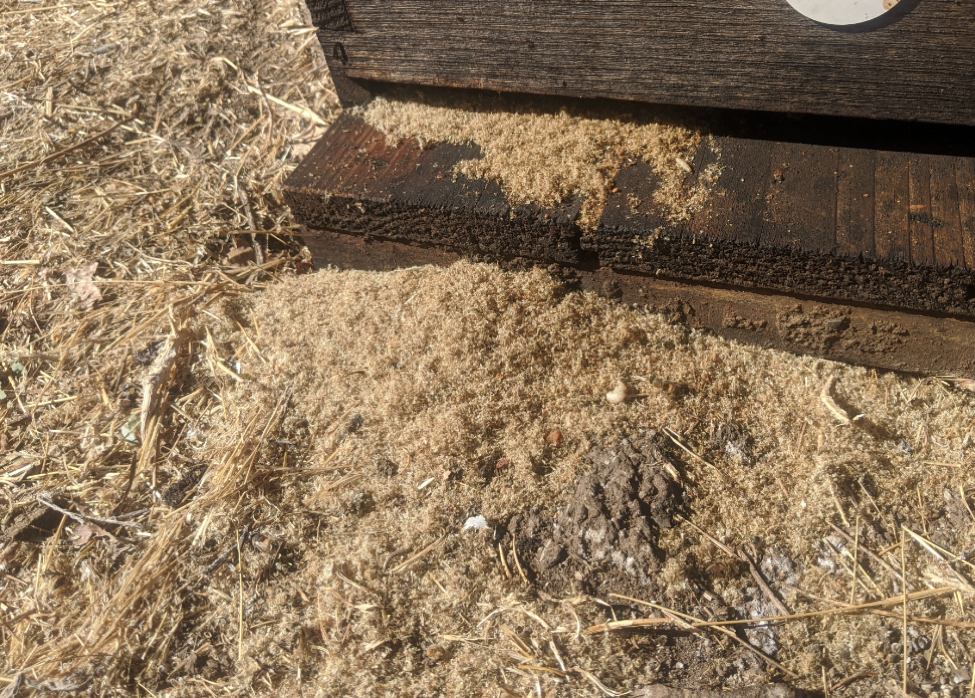
Fig. 6. We were surprised by the piles of sawdust in front of our hives. Rather than us having to scrape out and dispose of the spent strips after treatment, the bees in most hives did the job for us!
But How About the Queens?
I hear over and over about colonies going queenless due to formic acid treatment. In this trial, Formic Pro was clearly put to the “acid test” by applying it to weak colonies, with 2nd-year queens, in excessively hot weather, and applying the strips in the middle of the day (is there anything else that I could have done wrong?
But I’m still not convinced that formic vapors directly kill the queen — the strongest and most robust bee in the hive. I even ran a limited experiment last season in which I caged queens directly below formic pads, and didn’t notice a higher mortality rate for them than for the workers in the same cages (Figure 7).
Figure 7. I’m not clear that it’s the formic fumes that actually kill the queen. I’ve placed a few cages containing queens and workers directly below formic strips, and found that the queens were no more likely to die than the workers. This is a question clearly calling for more research, since queen loss due to formic may be preventable [[2]].
All the colonies in this trial were headed by overwintered queens reared the previous spring. They’d been split into nucs after almond pollination to regrow without mite treatment. Natural supersedure of these aged queens was already taking place in some hives (most of our colonies supersede their queens in August of their second season), and many colonies started with extremely high mite levels and small cluster sizes – so we must compare any “queen loss” to the baseline loss of the Control group.
Not surprisingly, a number of the formic-treated colonies indeed replaced their queens. But what really counts is whether the colony goes hopelessly queenless. So I measured only whether the colony contained a queen exhibiting a nice laying pattern at the end of the trial (Table 1).
Surprisingly, the rate of queenlessness for the hives treated with a repeated application of one strip of Formic Pro had no higher a rate of queenlessness than the untreated Control group. And even most of the colonies formic-blasted with a double-strip treatment in 95°F weather managed to have a laying queen by the end of the trial.
Practical application: Although a number of colonies did indeed replace their queens during the formic treatment, by the end of the trial the vast majority of them were again queenright. The take-home is that Formic Pro is a viable option for mite treatment even if the weather is hot (at least under low humidity), especially with the one-strip-at-a-time application method.
That said, let’s return to my permitted experimentation with the as-yet-not-approved extended-release application method for oxalic acid. OK, we clearly need an acronym — how about EROA?
Other Findings
My Pesticide Research Authorization allowed me to treat up to 600 hives with EROA, so we applied it to hives in various yards in the foothills, to some going to the high country, and others that went to pollination. We learned a lot!
The High Country Yards
We again supplied hives for research projects being performed by two different grad students in the alpine meadows of the Sierra Nevada (at around 6500 foot elevation)(Fig. 8).
Figure 8. When the vegetation dries up in the foothills, the bloom is just beginning in the High Sierra. This gave me a chance to see how an EROA treatment, applied well before the honey flow, would perform over an extended time period.
At the high-elevation yards, the colonies experienced much better conditions:
- They grew in strength, and reared tons of drones (favorable for mite reproduction),
- Most colonies put on a decent honey crop, and
- There were no other hives in surrounding landscape for mite drift from.
We placed hives in three well-separated locations in mid-June, took mite wash counts from all hives, and applied a single 25-g EROA sponge to the low-mite hives, or two sponges to the high-mite hives. We took counts again when we brought the hives back home in mid-August or early September (Figs. 9 and 10).
Fig. 9. In this yard, a single EROA sponge gave good mite control over a two-month period.
Fig. 10. Note the sky-high starting counts of a number of the hives in these yards, compared to their ending counts two and a half months later. As Eric and I were washing samples from these hives, he said, “Dad, I’ve never seen so many zeroes in a row!”
Practical question: Due to the large amount of drone rearing, varroa certainly had the opportunity to greatly increase. Was it the lack of mite immigration from other hives that allowed for such good results?
Other Yards in the Foothills
We nuc up our entire operation each spring, and give them an oxalic dribble at Day 18-19 after makeup [[3]], so in general they start with fairly low mite levels. But by June mite counts start to climb. This season was terrible for nuc buildup (due to weather), so we still had a lot of weak colonies in early June that called for mite management. We took mite washes from all the hives, and treated those not in honey production with a quarter sponge containing 12.5 g of OA (Figures 11 & 12).
Fig. 11. In the colonies still in nuc boxes (this one was weak due to having requeened itself), we hung an EROA strip over a top bar.
Fig. 12. In nucs with a box above, we placed a 12.5-g EROA sponge on the top bars between the two boxes.
Practical application: The efficacy of EROA is very much dependent upon bees coming in contact with the surface of the matrix, so strips placed directly under a lid don’t do much.
We performed follow-up mite washes on the hives in each yard that had previously shown high mite counts (Figure 13).
Fig. 13. There was great reduction in mite counts across the board by a relatively small EROA treatment. Note that the counts in the right-hand group were taken in September — three months after application of the treatment.
Practical application: Even a low-dose OA/gly treatment applied early in the season greatly reduced mite levels throughout the summer (under California conditions).
The Label is the Law
Hold your horses! The extended-release application method is not yet approved by the EPA. Until then, it is not legal to apply OA by this method for mite control, and I do not in any way promote beekeepers doing so.
Still More to Come…
Next month I’ll take a deeper dive into extended-release oxalic acid, including findings by others, a discussion of potential adverse effects, and a possible mode of action other than direct kill.
Notes and Citations
[1] https://www.dadant.com/wp-content/uploads/2016/12/Apivar-Instructions-USA-2015.pdf
[2] This question was brought up clear back in 2006 by Dr. Jim Amrine, who mixed Honey-B-Healthy with the formic acid to minimize queen loss. To my great surprise, there has been little follow up on the method. Amrine, JW & R Noel (2006) Formic acid fumigator for controlling varroa mites in honey bee hives. International J. Acarology 32(2): 115-124.
[3] https://scientificbeekeeping.com/simple-early-treatment-of-nucs-against-varroa/




